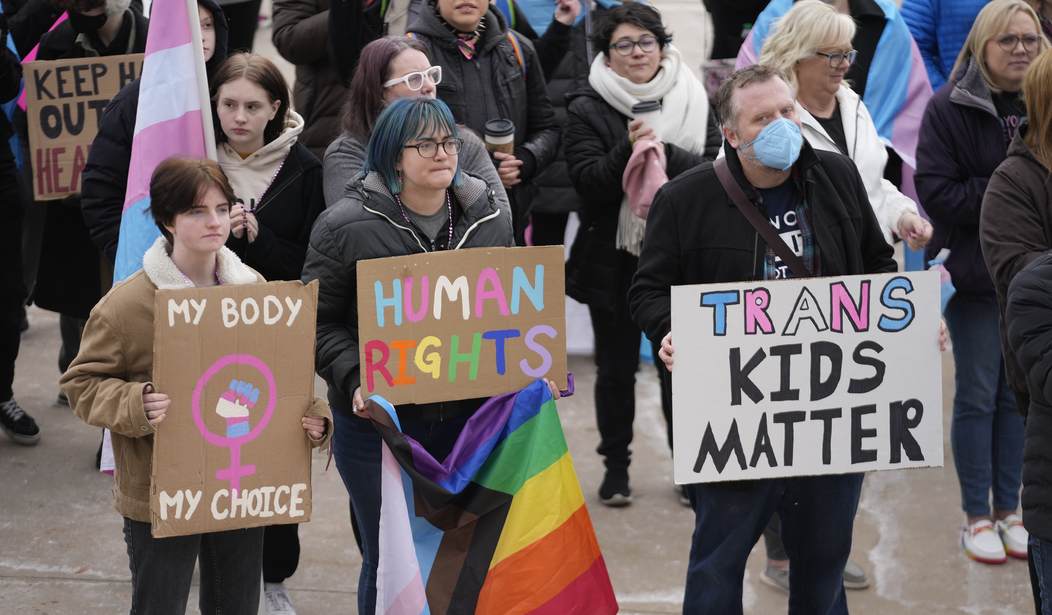One of the most influential studies on the value of treating gender-dysphoric patients with “gender-affirming” care has been “corrected.” Not retracted, quite, as the authors admit that their research and conclusions were flawed, but they don’t go as far as to assert it was bunk.
It was, in fact, bunk. The Journal Public Discourse has a long and well worth reading article on why the research was terrible, and how they and others successfully pushed to get the correction. I encourage you to read it, although you may have to skip over some more technical criticisms regarding statistical methods.
As the critics asserted, once proper statistical methods were used the results turned out to be very different from the original claims. And given the limits of the data collection (they only looked at one year of data) the results would be worse with better data.
The conclusion that gender-affirming care helps patients turned out to be wrong. Even the authors of the original study admit that now.
The study was published in the American Journal of Psychiatry, and after widespread criticism and 10 months of review, the journal has issued a major correction. The correction basically undermines one of the pillars used to buttress the claim that puberty blockers, hormones, and gender reassignment surgeries help patients with their mental health.
A major correction has been issued by the American Journal of Psychiatry. The authors and editors of an October 2019 study, titled “Reduction in mental health treatment utilization among transgender individuals after gender-affirming surgeries: a total population study,” have retracted its primary conclusion. Letters to the editor by twelve authors, including ourselves, led to a reanalysis of the data and a corrected conclusion stating that in fact the data showed no improvement after surgical treatment. The following is the background to our published letter and a summary of points of the critical analysis of the study.
The research went from claiming a major improvement in mental health outcomes to, at best, no improvement at all. And there is plenty of research that indicates that over time such “care” results in vastly worse outcomes. Anxiety, depression, and suicide at 19 times the rate of the general population.
19 times.
When we first analyzed the study last October, it was obvious that it had major shortcomings. Dr. Van Mol led our team—which includes endocrinologist Michael Laidlaw, child and adolescent psychiatrist Miriam Grossman, and Johns Hopkins professor of psychiatry Paul McHugh—to summarize our findings into a compact, 500-word letter to the editor. We were not the only clinicians to question the study’s legitimacy. A total of seven letters, all critical of the study, were published on August 1, including our own. The editors included a response from the original authors, and they explained why it took ten months to publish the letters.
Let’s look at the study and the shortfalls we found. The Swedish Total Population Register of 9.7 million people and national patient databases were used to assess the effectiveness of “gender-affirming hormone treatment” and “gender-affirming surgery” in affecting three endpoints: prescriptions for antidepressants and anti-anxiety medications, healthcare visits for mood or anxiety disorders, and post-suicide attempt hospitalizations. The study authors, Bränström and Pachankis, concluded that gender-affirming hormones offered no effect but that surgery did reduce mental health treatment. They further asserted the finding “provides timely support for policies that ensure coverage of gender-affirming treatments.”
One of the major flaws of the study was that the population tracked was extremely biased from the beginning. Vast numbers of people who received “gender-affirming” care dropped out of the data pool. Nobody knows why, and it is highly improbable that people who require lifelong care in a medical system that tracks everybody, as the Swedish public health system does, that they would simply disappear. At the very least these people have become detransitioners or have met some other less happy fate.
Still, even with this biased sample, the new statistical analysis shows no benefit to providing puberty blockers, hormones, or surgery to gender dysphoric patients. None. Zip. Nada.
One problem leading to irreproducibility is loss to follow-up. This refers to patients who participated in a study but at some point are considered “lost”: they are either unwilling or unable to communicate, missing, or dead. Loss to follow-up is frequently seen in studies that validate the benefits of transition, and it was strongly implied in the Bränström study by several metrics. First, the authors reported that 2,679 Swedes were diagnosed with “gender incongruence.” Though seemingly large, the numbers are a full order of magnitude below what DSM-V prevalence statistics would project. Where did the remainder go?
When the vast majority of the people you are supposedly studying are lost to follow-up, the data is worthless, to begin with. You have no idea if there is a systematic bias as to why they are lost, and the likelihood is that there is. It is not random at all. So your sample is contaminated from the beginning, and in this case, the contamination is likely due (although perhaps not) to a larger commitment to staying within the “gender-affirming” system. Obviously.
A paucity of gender-affirming surgeries also suggested loss to follow-up. Table 3 of their study showed that only 38 percent of people diagnosed with gender incongruence had any type of affirmative surgery, and only 53 percent of those—about 20 percent of the total—had surgery of the reproductive organs. Gender affirming surgery is free in Sweden, so where are these patients? And for those whose last surgery was ten or more years earlier, how many completed suicide, died of other related causes, or emigrated from Sweden prior to the study timeline?
In terms of follow-up care, the authors only measured three outcomes as listed above. Overlooked were key data of completed suicides, healthcare visits, prescriptions, and hospitalizations for the litany of other medical or psychological diagnoses potentially related to gender-affirming treatments. Such information was available through Sweden’s multiple registry databases, so why not use it? These omissions suggested cherry-picking data in order to obtain the desired results.
I know it is difficult to believe that the alphabet ideology scientists would cherry-pick data and methods of study to arrive at certain conclusions.
Yeah, right. That is the only evidence they have. No serious studies back up any of this.
We concluded our letter by comparing this study to the one we consider perhaps the best of its kind, also from Sweden, the 2011 Dhejne study. The Dhejne team made extensive use of numerous, specified Swedish registries and examined data from 324 patients in Sweden over thirty years who underwent sex reassignment. They used population controls matched by birth year, birth sex, and reassigned sex. When followed out beyond ten years, the sex-reassigned group had nineteen times the rate of completed suicides and nearly three times the rate of all-cause mortality and inpatient psychiatric care, compared to the general population. These important findings could have easily been updated by Bränström and Pachankis to the more current time frame.
This is a key point: the truly horrific outcomes are time delayed, and almost no extant studies actually follow up much beyond a few months to a year. This is ridiculous, especially considering that “gender-affirming” care is lifelong. Given placebo effects alone you would expect initial satisfaction as people react to the belief that something is finally being done to reduce their suffering. This is a well-known phenomenon, especially in psychology. People who enter inpatient care voluntarily often initially feel a massive relief handing their problems over to somebody else.
Which brings us back to the August AJP and why seven critical letters took ten months to see print. Along with the letters, the AJP editors published a correction that explained their need “to seek statistical consultations.” These consultants “concurred with many of the points raised.” The study’s authors were asked to reanalyze their data, and the results demonstrated “no advantage to surgery” for their three endpoints in the subject population. The authors noted in their response letter that their “conclusion” “was too strong.”
Too strong? People went under the knife, and were sterilized, and the momentum for mutilating children gained enormous steam based upon this and similarly shoddy studies. At the very least a conclusion that puberty blockers, hormones, and surgery provided no benefits would have slowed this movement.
Dangerous treatments that provide no benefit are not usually included in the standard of care, you know.
All gender-related science is similarly shoddy and biased, just as claims that the treatments are safe and effective are lies.







Join the conversation as a VIP Member